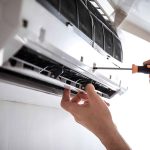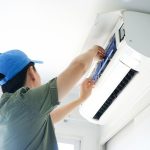Selecting and installing high-quality gaskets is crucial for achieving optimal performance and preventing leaks in various applications. Gaskets play a vital role in creating a reliable seal between two mating surfaces, ensuring the containment of fluids, gases, or contaminants. In this article, we will specifically focus on EPDM (ethylene propylene diene monomer) gaskets and explore their advantages in different industries and applications. EPDM gaskets offer exceptional sealing capabilities, durability, and resistance to environmental factors, making them a preferred choice in a wide range of sealing applications. Understanding the benefits of EPDM gaskets and learning how to select and install them correctly can significantly enhance the performance and reliability of your sealing systems.
Know About EPDM Gaskets:
EPDM is a versatile elastomer material widely used in gasket manufacturing due to its exceptional properties. EPDM gaskets are known for their excellent resistance to environmental factors, including heat, moisture, and chemicals. The inherent properties of EPDM, such as its high-temperature resistance, UV resistance, and ozone resistance, make it suitable for sealing applications in various industries. EPDM gaskets exhibit excellent flexibility, elasticity, and compression set resistance, allowing them to maintain a reliable seal even under varying pressures and temperatures. Moreover, EPDM gaskets have low permeability, preventing the leakage of fluids or gases. Whether in automotive, construction, or industrial applications, EPDM gaskets provide reliable sealing performance and long-lasting durability, making them a preferred choice for engineers and designers seeking efficient leak-prevention solutions.
Assessing Application Requirements:
Before selecting EPDM gaskets for a particular application, it is crucial to assess the specific requirements of the application. Factors such as temperature range, pressure, media compatibility, and sealing performance criteria play a significant role in determining the suitability of EPDM gaskets. EPDM gaskets are available in various formulations and grades, each designed to meet different application demands. Consulting with gasket manufacturers or suppliers is essential to identify the most suitable EPDM gasket specifications for the given conditions. These experts can provide guidance on selecting the appropriate EPDM compound, thickness, hardness, and design to ensure optimal performance and leak prevention. By carefully evaluating application requirements and seeking professional advice, one can choose the right EPDM gaskets that will effectively meet the sealing needs of their specific application.
Choosing The Right EPDM Gaskets:
When choosing EPDM gaskets, it is essential to consider the different forms available and select the most suitable option for the application. EPDM gaskets come in various forms, including sheet gaskets, o-rings, and custom-molded gaskets, each offering unique sealing capabilities. Additionally, selecting the appropriate size, shape, and thickness of EPDM gaskets is crucial to ensure a proper and effective seal. Application-specific factors, such as pressure, temperature, and the nature of the sealing surface, should be taken into account when determining the dimensions of the gaskets. Moreover, considering industry standards and certifications, such as ASTM, FDA, or NSF, is vital in ensuring the quality and performance of EPDM gaskets. Adhering to recognized standards provides confidence that the gaskets meet stringent requirements and will perform reliably in their intended applications, contributing to optimal performance and leak prevention.
Installation Best Practices:
Proper installation of EPDM gaskets is crucial for achieving optimal performance and leak prevention. Begin by thoroughly cleaning the mating surfaces and removing any debris or remnants of old gasket material to ensure a clean and smooth surface. This step promotes better adhesion and prevents leaks caused by irregularities. Next, carefully position the EPDM gasket on one of the mating surfaces, ensuring proper alignment with the bolt holes or flange edges. Take into account any notches or grooves designed to fit specific components. When aligning multiple gaskets, make sure they are evenly distributed and overlap correctly. Once positioned, gradually tighten the bolts or fasteners in a crisscross pattern to evenly distribute the compression force across the gasket. Avoid over-tightening, as it can lead to gasket deformation or damage. The goal is to achieve a sufficient compression level that creates a tight and effective seal without exceeding the gasket’s recommended compression limit.





